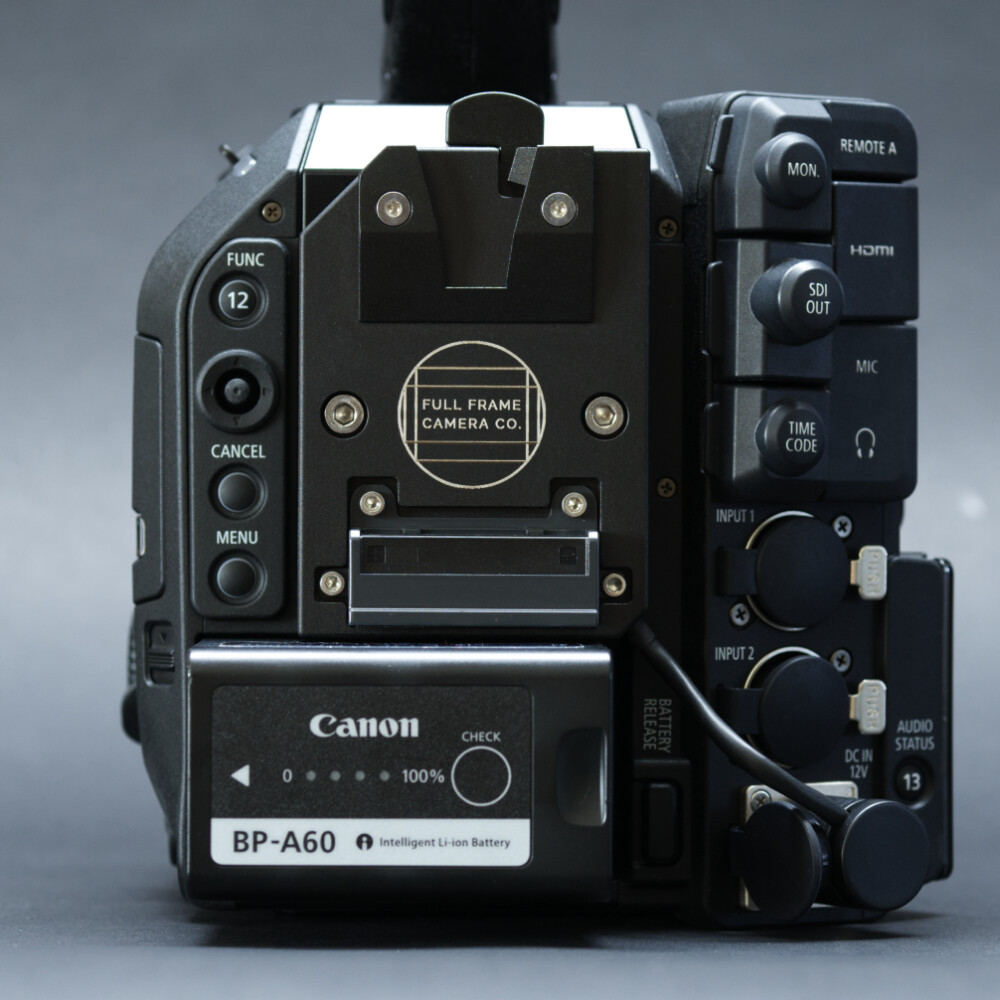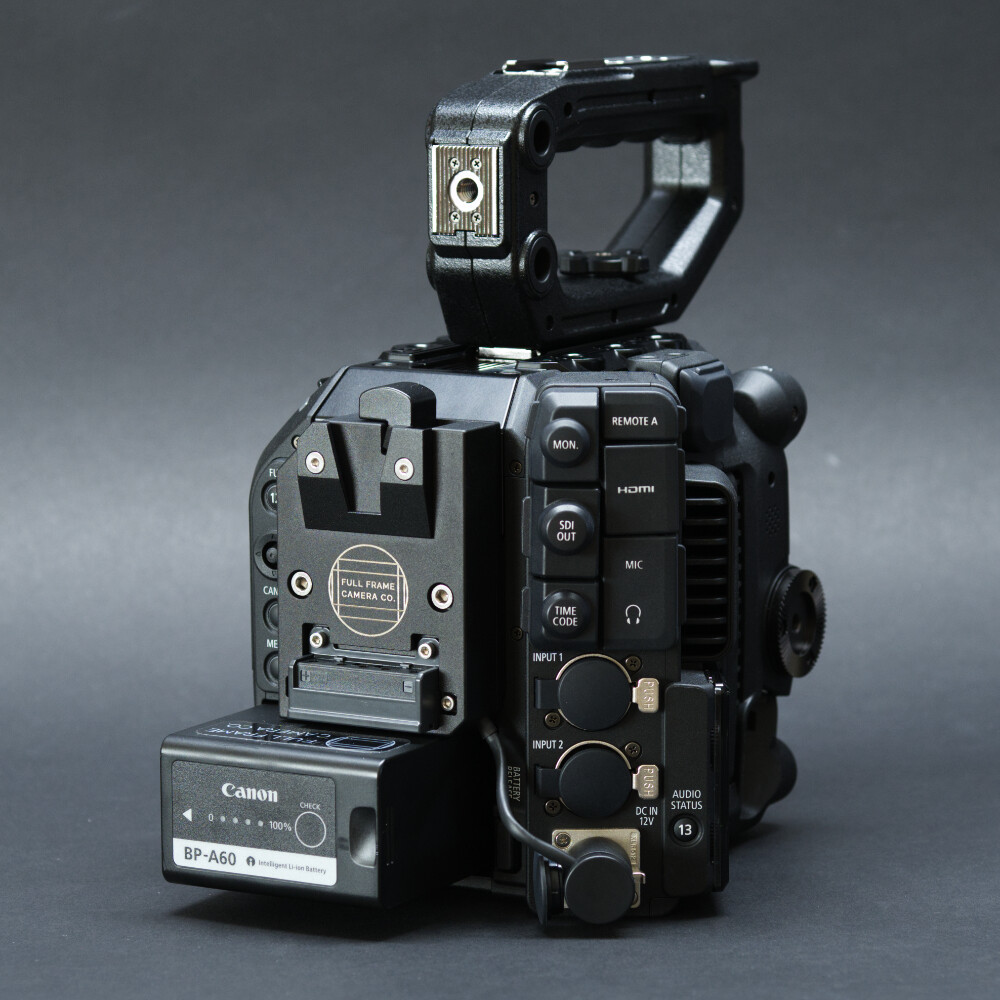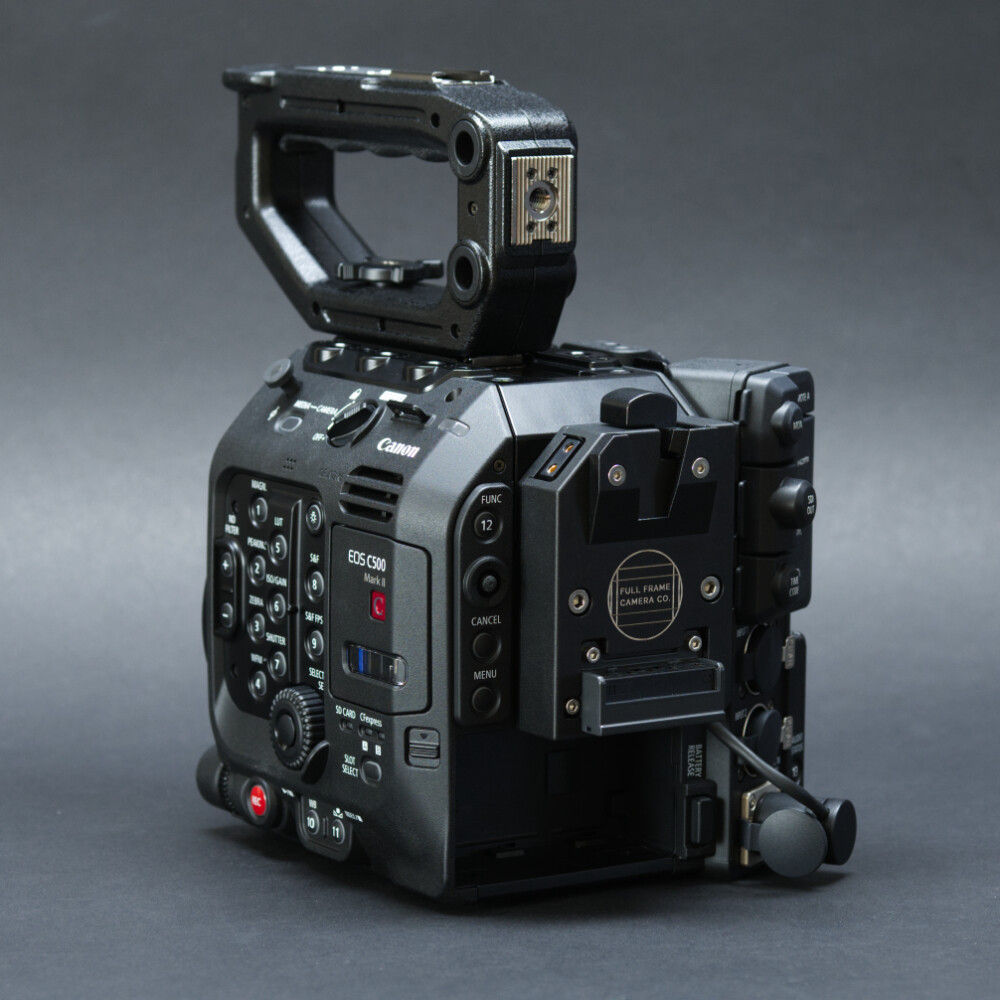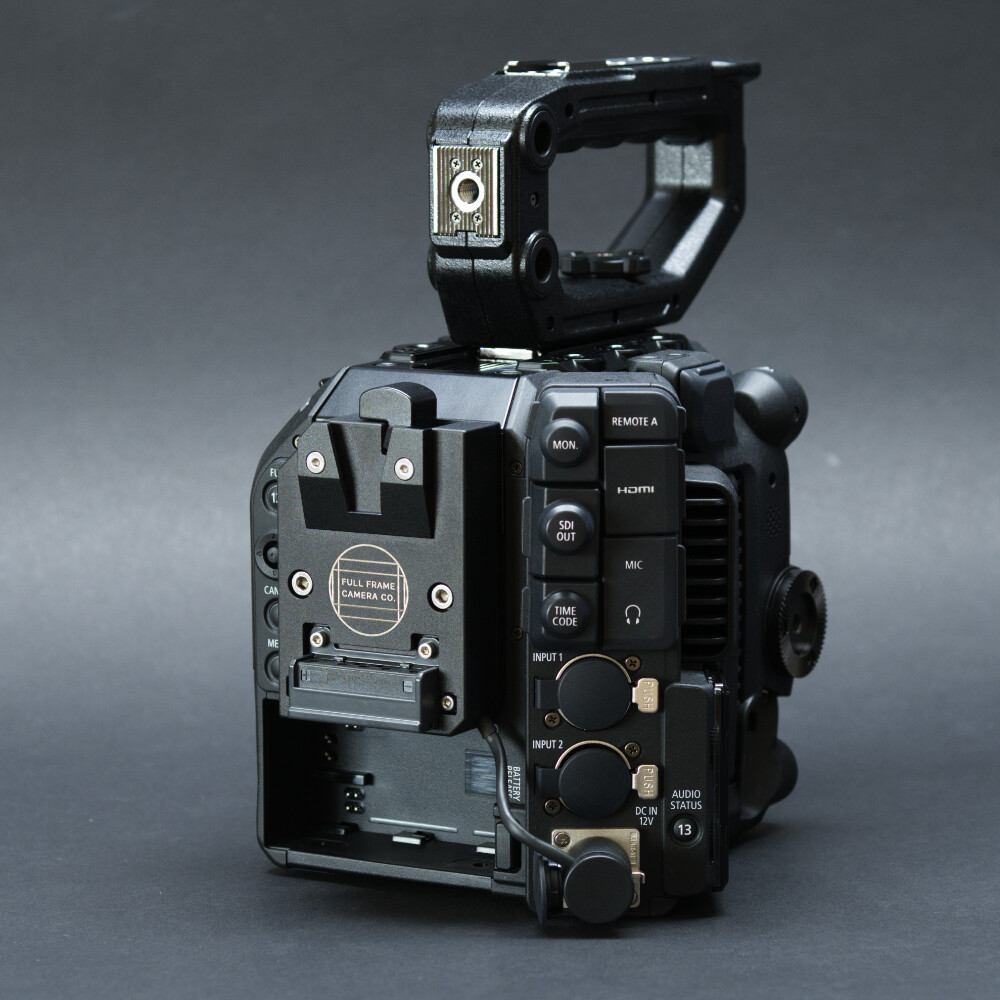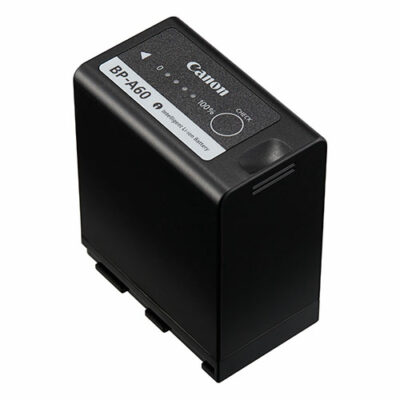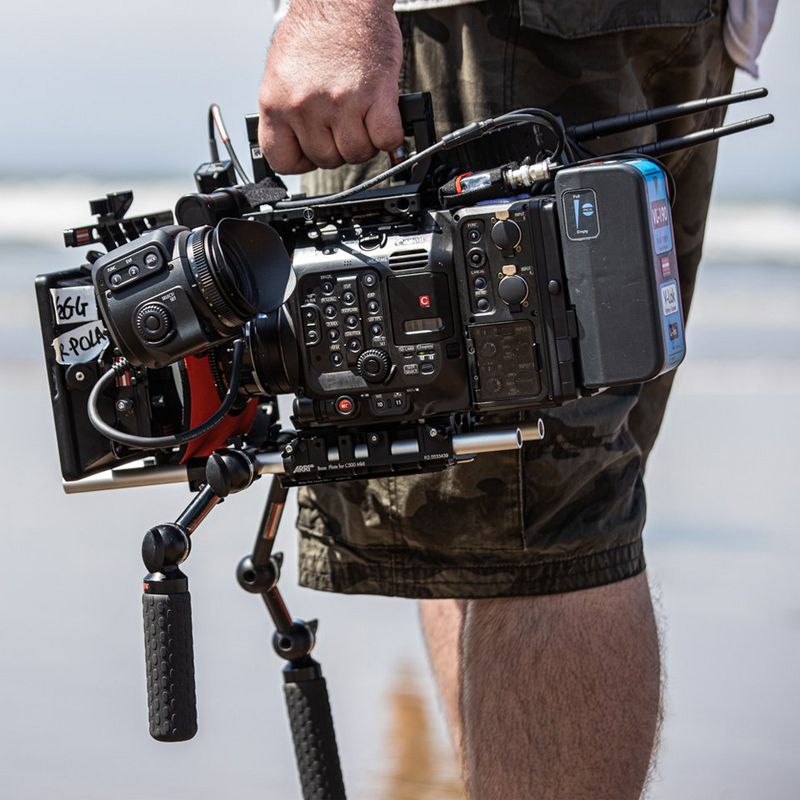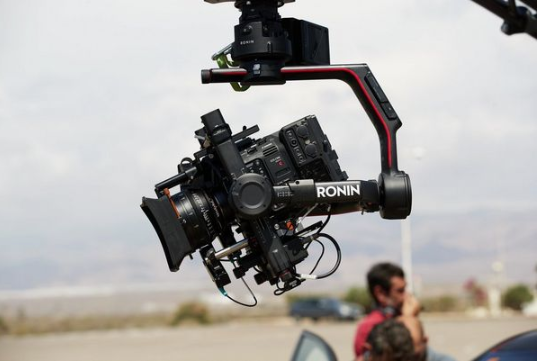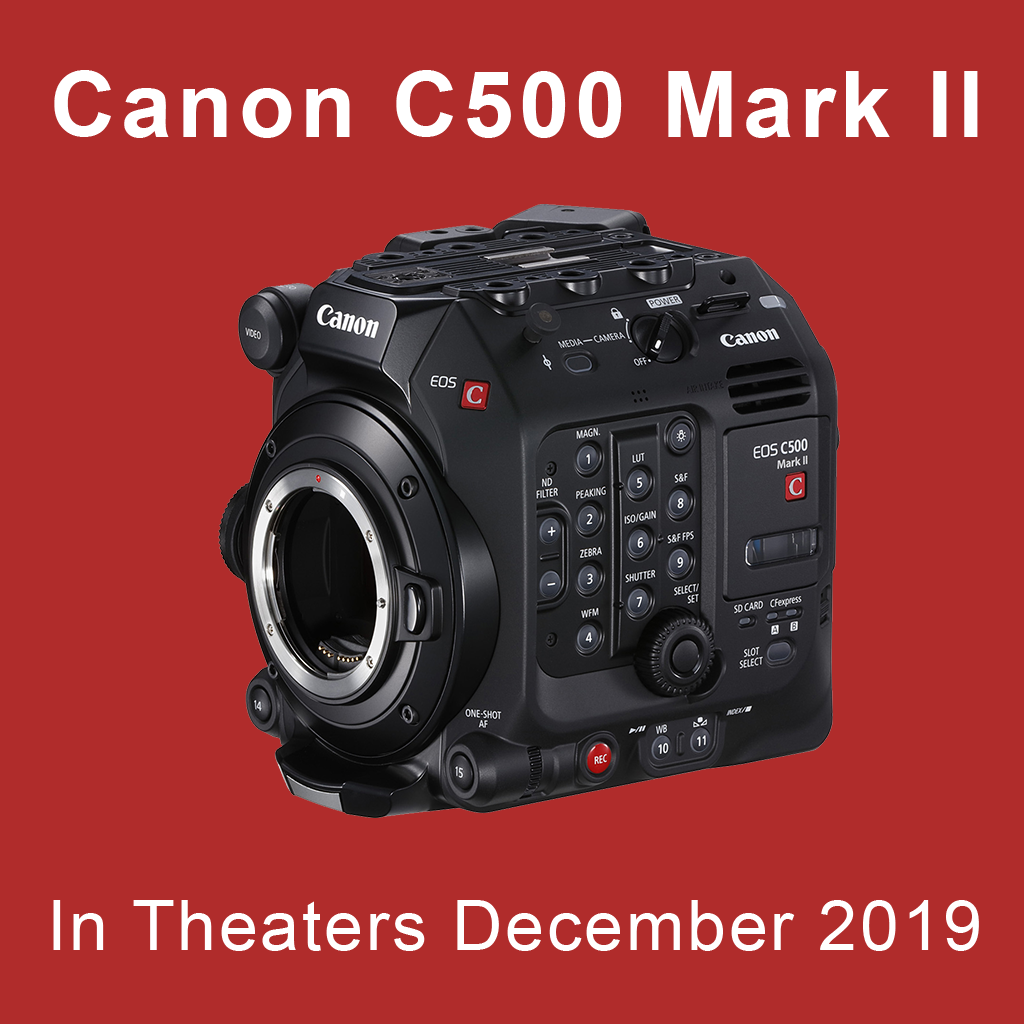Canon unveiled their latest update for the Canon EOS C500 Mark II yesterday. This update brings some unexpected features to the camera.
Cinema RAW Light
Canon has added a host of Cinema RAW Light recording formats. All of these formats have 12-bit color, and keep 12-bit color no matter the frame rate they’re recording at. The table below shows the different formats now available for use.
| Recording Format | 59.94Hz | 59.94Hz | 59.94Hz | 24.00Hz | |
| Resolution | Frame Rate | 59.94p | 29.97p | 23.98p | 24.00p |
| 5952 x 3140 | RAW HQ | —– | 2.12 Gbps | 1.7 Gbps | 1.77 Gbps |
| RAW ST | 2.09 Gbps | 1.05 Gbps | 835 Mbps | 836 Mbps | |
| RAW LT | 1.36 Gbps | 679 Mbps | 543 Mbps | 544 Mbps | |
| 4192 x 3140 (4:3) | RAW HQ | —– | 1.5 Gbps | 1.2 Gbps | 1.2 Gbps |
| RAW ST | 1.48 Gbps | 737 Mbps | 590 Mbps | 590 Mbps | |
| RAW LT | 958 Mbps | 479 Mbps | 383 Mbps | 384 Mbps | |
| 3768 x 3140 (6:5) | RAW HQ | —– | 1.35 Gbps | 1.08 Gbps | 1.08 Mbps |
| RAW ST | 1.33 Gbps | 663 Mbps | 530 Mbps | 531 Mbps | |
| RAW LT | 861 Mbps | 431 Mbps | 345 Mbps | 345 Mbps | |
| 4096 x 2160 | RAW HQ | 2.02 Gbps | 1.01 Gbps | 807 Mbps | 807 Mbps |
| RAW ST | 993 Mbps | 497 Mbps | 397 Mbps | 398 Mbps | |
| RAW LT | 645 Mbps | 323 Mbps | 258 Mbps | 259 Mbps | |
| 2048 x 1080 | RAW HQ | 511 Mbps | 256 Mbps | 205 Mbps | 205 Mbps |
| RAW ST | 252 Mbps | 126 Mbps | 101 Mbps | 101 Mbps | |
| RAW LT | 164 Mbps | 82 Mbps | 66 Mbps | 66 Mbps |
You can find the Canon C500 Mark II Firmware Update 1.1.1.1 on March 21st of these year here: https://www.usa.canon.com/support/p/eos-c500-mark-ii#idReference%3Dadvisories
And don’t forget you can still get 0% financing for 24 months on all Cinema EOS Cameras: Apply Here
